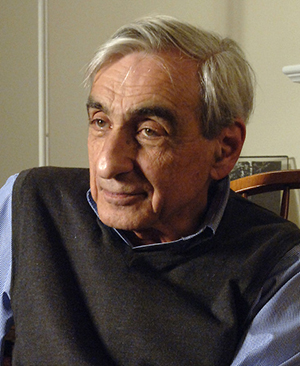
Michael Walzer, one of the most distinguished and influential thinkers of our time, was the honored guest in this year’s Henry L. Stimson Lecture Series on World Affairs at Yale University. In the course of four public lectures that took place over a two-week period in April, Walzer tackled an original question of great import, “What happened to national liberation?” His inquiry focused on the experience of three relatively new states and the political movements that brought them independence in the years after World War II. Interestingly, these countries experienced the same surprising pattern in their process of national liberation.
National liberation movements managed to free Israel, India, and Algeria from foreign rule, in part, by raising the public’s consciousness. Influenced by Western thought, freedom fighters, such as Jawarhalal Nehru in India, promoted a secularizing, modernizing, and developmental ideology in the hope of releasing their nations’ people from longstanding traditions of authoritarianism, inequality, and passivity. They advocated for long-term activism, democratic governance, scientific education, and economic advancement. They even banned a number of traditions, such as the Hindu Sati practice, a funeral custom among some communities in which a recently widowed woman would immolate herself on her husband’s funeral pyre. However, the liberators’ achievements were surprisingly short-lived.
The states that now exist are not the states that were originally envisioned by the leaders of the national liberation movements. All three movements—Labor Zionism, the Indian National Congress, and the Algerian National Liberation Front—were vigorously committed to a secular project, but the states they created fell under the influence of religious fundamentalism. Thus, we see the paradoxical sequence unfold: an illiberal outcome to a successful liberalizing effort.
Walzer used the Israeli experience to illustrate the paradox in greater depth. Zionism, he explained, was marked by a deep commitment to the transformation of the Jewish people. However, the secular rebellion, while trying to negate tradition, “provoked an underground culture of religious zealotry nourished by memory, carried by the family, and sustained by religious conventions.” The protagonists of the counterculture posed as citizens of the new state by attending public schools, voting in elections, and sometimes even serving in the army, but their strongest allegiance was not to the state. Their true loyalty was to their traditional pre-state communities and customs of old. Thus, if the passivity of traditional Judaism endures, if rabbis maintain dominance, and if the subordination of women persists, it is because the liberators’ reforms had limited staying power.
So why were liberationists unable to consolidate their achievement and reproduce themselves in successive generations? The explanation, according to Walzer, lies in the fact that national liberation movements posed too absolute a challenge to traditional ways. Engagement with the culture was and remains a necessity. Seculars and liberals, he argues, should negotiate with predominant religious doctrines. They must ask themselves, “How can national liberation make itself central to the ongoing life of the nation?” Though liberals must at certain points act with unrelenting hostility to conservative forces, in the end, it is only through compromise that an enduring liberal equilibrium can be attained.
